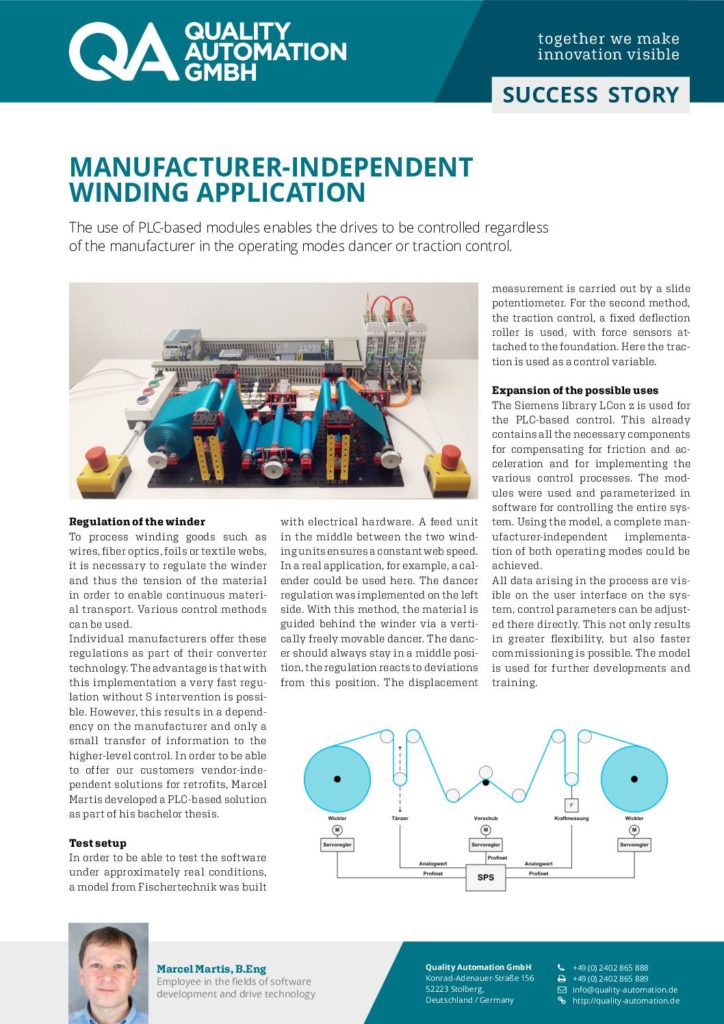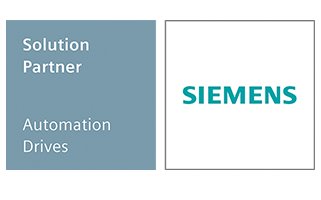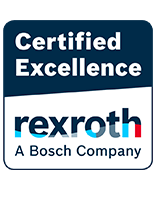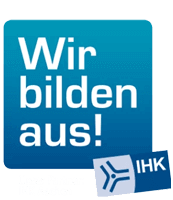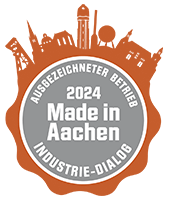Regulation of the winder
To process winding goods such as wires, fiber optics, foils or textile webs, it is necessary to regulate the winder and thus the tension of the material in order to enable continuous material transport. Various control methods can be used.
Individual manufacturers offer these regulations as part of their converter technology. The advantage is that with this implementation a very fast regulation without SPS intervention is possible. However, this results in a dependency on the manufacturer and only a small transfer of information to the higher-level control. In order to be able to offer our customers vendor-independent solutions, especially in case of retrofits, Marcel Martis developed a PLC-based solution as part of his bachelor thesis.
Test-Setup
In order to be able to test the software under approximately real conditions, a model from Fischertechnik was built with electrical hardware. A feed unit in the middle between the two winding units ensures a constant web speed. In a real application, for example, a calender could be used here. The dancer regulation was implemented on the left side. With this method, the material is guided behind the winder via a vertically freely movable dancer. The dancer should always stay in a middle position, the regulation reacts to deviations from this position. The displacement measurement is carried out by a slide potentiometer. For the second method, the tension control, a fixed deflection roller is used, with force sensors attached to the foundation. Here the tension is used as a control variable.
Expansion of the possible use
The Siemens library LCon is used for the PLC-based control. It already contains all the necessary components for compensating of friction and acceleration and for implementing the various control processes. The modules were used and parameterized in software for controlling the entire system. Using the model, a complete manufacturer-independent implementation of both operating modes could be achieved.
All data arising in the process are visible on the user interface on the system, control parameters can be adjusted there directly. This not only results in greater flexibility, but also faster commissioning is possible. The model is used for further developments and training.


